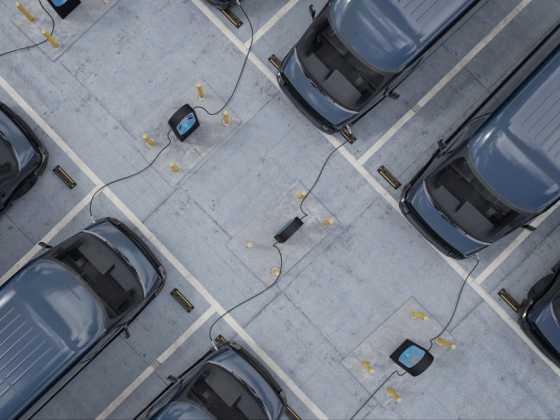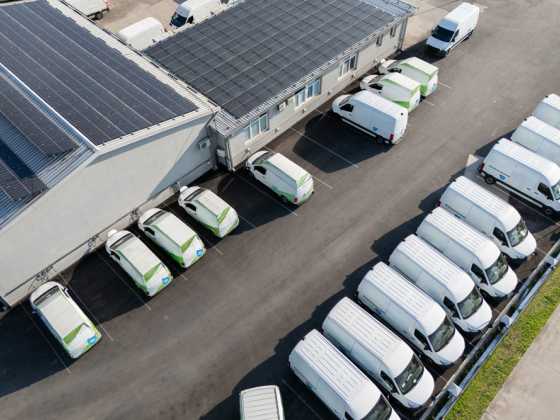Electric vehicles: predictions for twenty twenty

The growth of the electric car market will once again dominate the automotive headlines in 2020, but will supply capacity be able to meet demand and will we see consolidation and interoperability across charging technologies? Zero Carbon Futures’ managing director, Dr Colin Herron, takes a look at some of the key emerging issues in the year ahead
The year 2020 is a significant year for our industry. Not only because we’re entering the new decade, but because it was the year that many believed we would see electric cars make it into the mainstream. Many countries and large cities had set ambitious targets for EV registrations for the year ahead. But what is the reality?
One thing is for sure – the industry has changed at a rapid rate over the last decade. Ten years ago, we were installing some of the very first charge points in the UK. We struggled to find suppliers for rapid charge points and the majority of the original estate were 3kW posts with three-pin plugs. Back in 2010, the vehicle choice for consumers was limited to just a handful of early models and EV registrations were negligible. Fast forward ten years and in some ways the transition has been phenomenal: more makes and models, longer ranges and high-powered charging. However, electric cars as mainstream? I don’t think we’re close. Certainly the world hasn’t come close to meeting some of the targets set for EVs. Here’s what I think will be dominating the industry over the year ahead.
Clean air zones
London has bravely led the way in the UK and Europe on the introduction of clean air zones. Its ultra low emission zone came into force in 2019 and tougher standards for heavy vehicles will be coming into play in October 2020.
Cities such as Glasgow, Leeds and Birmingham have all declared their aspirations for some form of clean air zones this year with many more undertaking consultations on the topic. Such zones are certainly going to be high on the agenda for many cities as local authorities are tasked with clearing up the air in their areas. Whilst we see this as a major step forward to encouraging low carbon vehicle adoption, there are still many unanswered questions that stand in the way.
Posing a significant challenge to any policy is most importantly the lack of available technology. Especially considering vehicle types such as HGVs, long distance coaches and even bin lorries which poses a significant threat to the successful implementation of such zones. I am not sure we will see the answer to this one in 2020 and I hope local authorities take care to make the correct decisions that work for their local area and is based on vehicle availability and technology.
Vehicle supply
2020 is definitely the year where the rate of release of pure-electric cars will be accelerated. We’ll be seeing manufacturers roll out new models across a wide range of price brackets and with far bigger ranges. The likes of which until now have been limited to the luxury end of the market. The stimulus for this has definitely come from the new EU emissions regulations in 2020 which provides a super credit allowing electric vehicles to count twice towards the overall manufacturer’s fleet average emissions. This will drop over subsequent years so I think we’ll see many manufacturers making the most of this next year with a focus on 2020 registrations.
However, whilst this means that consumer choice is increasing, we must exercise some caution when it comes to the impact that this will have on accelerating EV take-up. The manufacturing capacity is what is important. Even at full volume, European plants will struggle to keep up with demand. I think we’ll see waiting lists for many of the new models and I am not convinced that we’ll see a step-change in registrations in 2020.
Charging infrastructure
Last year the number of charge points in the UK continues to grow at an exponential, if uncoordinated, rate. With the emergence of the private sector in this space, one of the biggest questions over 2020 is the role that local authorities have to play in infrastructure roll-out.
When demands on council budgets and resources are increasingly pressured, how best can areas take a measured view to infrastructure provision? The private sector has become focussed on rapids, hubs and filling stations whereas there is still a need for public, fast street chargers.
We believe that local authorities should focus on the social need, for example in areas that will not be of immediate interest to commercial operators. Identifying needs for individual user types such as taxi drivers; council fleets and of course supporting the future charging need of those without access to home charging must be the focus. The question of street charging provision vs hubs will be a key area (battleground) to watch.
We expect to see this question raised more in our work with towns and cities and will be supporting them to take a more measured, data-led view on this topic.
Consolidation and interoperability
There’s still many players in the market and confusion still reigns with EV drivers. The roll-out of contactless charging will go some way to support a more consolidated network but as this applies only to rapids we’ve still got a long way to go. In talking to electric vehicle drivers through recent market research in the North East of England, drivers are telling us that the multitude of access cards and apps is still one of the biggest bugbears for them. More so when they travel across the UK. Drivers expect the same ease of access as they would when paying for petrol or diesel and they’re not getting that at present.
We do expect that 2020 will be another year of mergers and buy-outs which will pave the way for a more interoperable network across the UK, reducing the number of players in the space.






